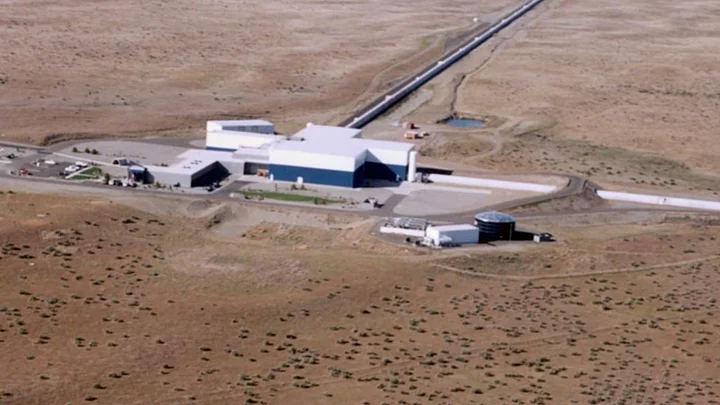Scientists in the United States and Europe have, for the first time, detected gravitational waves – the ripples in space and time predicted by Albert Einstein – at the same time as light from the same cosmic event, according to research published on Monday.
The waves, caused by the collision of two neutron stars some 130 million years ago, were first detected in August in the Laser Interferometer Gravitational-Wave Observatories, known as LIGO, in Washington state and Louisiana, as well as at a third detector, named Virgo in Italy.
Two seconds later, observatories on earth and in space detected a burst of light in the form of gamma rays from the same path of the southern sky, which analysis showed likely to be from the same source.
Less than two years have passed since scientists working at the Massachusetts Institute of Technology and the California Institute of Technology first detected gravitational waves coming off two black holes.
The gravitational waves had been predicted by Einstein in 1916, as an outgrowth of his groundbreaking general theory of relativity, which depicted gravity as a distortion of space and time triggered by the presence of matter.
Three US scientists, who made that discovery, were awarded the Nobel prize in physics, earlier this month.
The findings published on Monday help confirm Einstein's theory, said the researchers, whose work was published in Physical Review Letters.
MIT senior research scientist David Shoemaker said:
From informing detailed models of the inner workings of neutron stars and the emissions they produce, to more fundamental physics such as general relativity, this event is just so rich. It is a gift that will keep on giving.
The LIGO instruments work in unison and use lasers to detect remarkably small vibrations from gravitational waves as they pass through the earth.
Previously, scientists could only study space by observing electromagnetic waves such as radio waves, visible light, infrared light, X-rays and gamma rays. Those waves encounter interference as they travel across the universe, but gravitational waves do not, meaning they offer a wealth of additional information.
The colliding neutron stars were smaller than the black holes that LIGO previously detected.
Black holes are so dense that not even photons of light can escape their gravity. Neutron stars are relatively small, about the size of a city, the compact remains of a larger star that died.
The National Science Foundation, an independent agency of the US government, provided about $1.1 billion in funding for the LIGO research over 40 years.
(At The Quint, we question everything. Play an active role in shaping our journalism by becoming a member today.)
